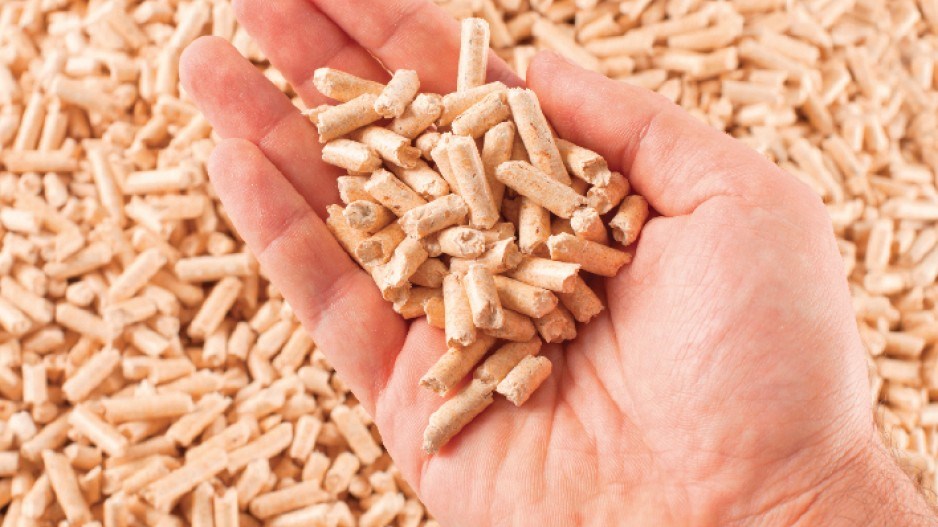One First Nations-owned forestry company hopes a planned wood pellet plant will fill a big hole in northwest B.C.’s forestry industry.
Coast Tsimshian Resources, owned by the Lax Kw’alaams Band, recently signed an agreement with Pinnacle Renewable Energy to work toward the construction of a wood pellet plant in Terrace. Richmond-based Pinnacle operates wood pellet plants throughout B.C. and completed a pellet shipping facility in Prince Rupert in October 2013.
The closure of the Skeena Cellulose pulp mill in Prince Rupert in 2001 left forestry operations in the region with nowhere to send their sawmill waste or pulp logs, said Wayne Drury, CEO of Coast Tsimshian Resources.
The pellet plant may also lead to Coast Tsimshian building a sawmill.
“The biggest challenge we’ve always faced is that we have no place to put the waste material from our sawmill,” Drury said. “But now that the pellet plant is coming, we have plans to build a sawmill in the Terrace area.”
Drury said his company hopes to open the pellet plant in October 2015. Coast Tsimshian owns forest licences previously held by Skeena Cellulose, including a tree farm licence (TFL). The company sells some logs to Terrace’s Skeena Sawmill and exports raw logs to China, Korea and Japan.
In 2010, Coast Tsimshian announced an agreement with Global Bio Coal, a Vancouver-based company that used a wood pellet drying technique to create a coal substitute. However, that partnership ended in 2011.
“Everything is lining up,” said Drury of the deal with Pinnacle. “We have the company that’s got the technical know-how. They’ve got the markets, they’ve got the load-out facility in Prince Rupert and we have our expertise … which is the wood supply and forest management expertise and the desire to do this for the Northwest.”
He added that another asset Coast Tsimshian brings to the table is its relationship with Chinese buyers. The company has had an office in China since 2008, staffed by one full-time employee.
Although most B.C. wood pellets are shipped to Europe, Drury believes there is potential to expand a wood pellet market in China as that country looks for alternatives to coal. Gordon Murray, executive director of the Wood Pellets Association of Canada, said the Chinese market for pellets is virtually nonexistent, but that demand is growing in Korea and Japan in response to policies that require greenhouse gas reductions. European buyers currently take around 90% of the pellets B.C. produces.
Murray said northwest B.C forests, which are old and mostly made up of hemlock, contain a lot of wood that is only suitable for pulp or pellets. Having no outlet for that waste wood is inhibiting the industry.
“This is a natural partnership between Coast Tsimshian and Pinnacle,” Murray said. “Coast Tsimshian has demonstrated a real ability to manage their TFL, and all the ingredients are there for it to be successful.”




